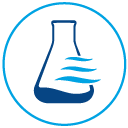
How Stormwater Runoff Contamination Affects Rivers
Introduction to Stormwater
There is a growing awareness of the effects of stormwater runoff from our industrial sites, farms, construction sites, parking lots, roads and the roofs of our buildings. The rapid movement of stormwater causes erosion of soils and sweeps up dangerous pollutants from these surfaces. The result is that these pollutants, soils, trash and fecal matter get washed into our water (streams, rivers, lakes and oceans) and even into our groundwater resources.
It is only by thoroughly following stormwater best management practices (BMPs) that we have, and will continue to have, become better able to contain flooding, mitigate erosion and keep pollution from entering our waterways and water sources.
What is Stormwater Runoff?
Stormwater runoff is simply the water from rain, snow and ice melt that does not get absorbed into the ground but flows into our creeks, rivers and oceans. Along with the water comes a variety of contaminants in stormwater runoff, including soil, trash, oils, pesticides and a host of other pollutants.
Water runoff from our cities, highways, industrial facilities, parking lots and construction sites carries pollutants that degrade water quality, harm marine life and negatively impact our ability to use our waters for recreational activities like swimming, fishing and boating. This has led governing agencies to ask, how does stormwater affect the environment and how can we mitigate the damage?
Over the past few decades, State Water Resources Control Boards, Regional Water Quality Control Boards, and the US Environmental Protection Agency, have each made the regulation of how to manage stormwater runoff and treatment of stormwater runoff contamination in industrial, municipal and residential areas, a priority concern.
How Does Stormwater Runoff Lead to River Contamination?
Every river has a myriad of little creeks and streams that feed it with water from rains and melting snow. Each of these natural stormwater drainage systems is connected to lands (known as watersheds) that feed into them. Whenever one of these watersheds is altered it affects how water is absorbed into the ground and how water flows into the creeks and rivers of that watershed. For example, when a new construction site is begun, holes are dug, erosion of soils increases and contaminants from the open site flow into the river system. Then, once the building is built, all of the rainfall that once fell on land that absorbed much of the water now falls on an impervious surface, like a roof or parking lot and moves much more quickly and in larger quantities into the waterways. Faster moving water picks up contaminants from parking lots and construction sites, trash and debris, and does not get absorbed into the soil.
Some of the hazardous or toxic chemicals that are commonly found in stormwater runoff contamination include:
- Heavy metals
- Oil & grease
- Organic contaminants
- Pesticides & herbicides
- Carcinogens
- Industrial chemicals including PFAAs, Dioxins and Furans
Additionally, these stormwaters rush so swiftly into drainage systems that they can overwhelm sewer systems leading to sewage overflows. All of these contaminants in stormwater runoff quickly end up in our rivers and create hazards for fish, birds and other riparian wildlife and plant life, and even to human health.
How Do We Manage Stormwater Runoff to Improve River Health?
Many new regulations have been established to help us with how to manage stormwater runoff so that we can improve the health of our rivers and their surrounding environments. Stormwater testing at industrial and construction sites, parking lots, large office buildings and at livestock pens helps to locate sources of pollution and identify contaminants that are causing river pollution. In many states stormwater samples must be collected at several points and sent to environmental laboratories for testing twice a year.
There are other best management practices that are being required for construction sites, communities and highways, to mitigate stormwater runoff and pollution across the country. Combinations of retention ponds, dry detention basins and vegetated swales, are commonly used to slow the flow of runoff and allow for stormwater and the pollutants it carries to be absorbed into the soil and trash and debris to be caught before entering the rivers.
Newer green infrastructure solutions (these include permeable pavement, green roofs and rain gardens) are also being used to reduce the volume of stormwater runoff, flowing into sewer systems. These help to decrease sewage overflows into our rivers. Green infrastructure practices help to make the rooftops of city buildings capture rainwater and hold it. The process also filters out pollutants and reduces the amount of runoff.
Conclusion
Torrent Laboratory is a leader in stormwater testing. Getting stormwater tests done frequently, and properly applying the results to identify sources of contaminants in stormwater runoff, helps us clean up our rivers and streams. This will help to ensure safe use of our rivers, for recreation and healthy riparian environments, and for a wide range of plants and animals, long into the future.
Torrent Laboratory, Inc., is a state of California certified (CAL ELAP) Laboratory that employs EPA approved test methods and services, and meets all quality control analytical and documentation requirements demanded by California regulating authorities.






